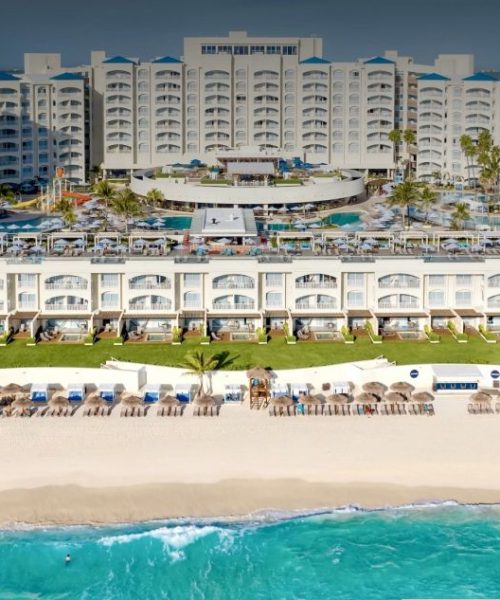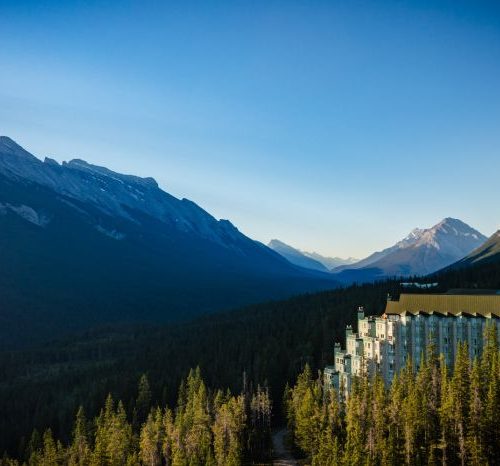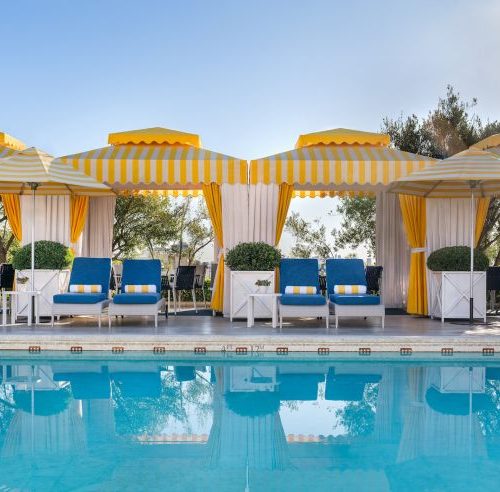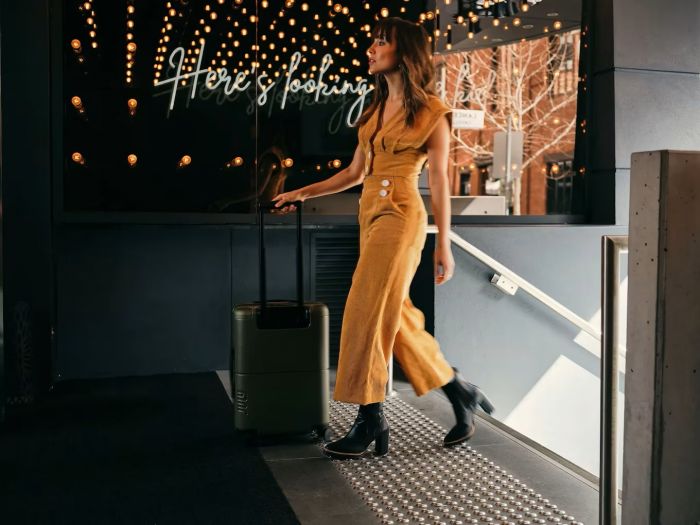
All Images credit the Lancemore Group
I’ve long considered Melbourne to be Australia’s most culturally compelling city. It’s not just the architecture or the sheer velocity of its dining scene. It’s the way the city contains multitudes—proud immigrant enclaves that have shaped entire neighborhoods, Victorian facades draped in ivy, graffiti that spans from forgettable tags to street art worthy of the Guggenheim.

Melburnians, too, are a mixed ensemble: suited-up execs power-walking to pre-theatre dinners, Gen Z creatives in thrifted Balenciaga, and the occasional bogan outside a 7-Eleven hollering into a vape cloud. Somehow, it all works. Melbourne’s public stage is a shared one—and nobody’s trying to upstage the next act.
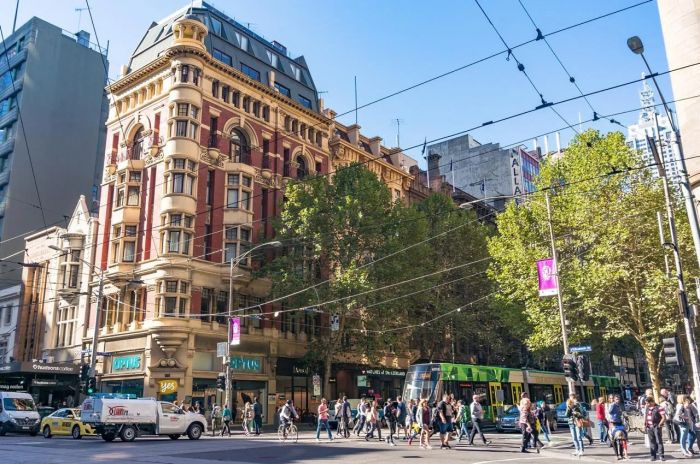
However, the soul of Melbourne’s CBD lives in its laneways—those sly side streets where espresso bars, designer boutiques, secondhand booksellers, and tiny theatres co-exist without jostling for attention.

It’s down one of these lanes, Crossley Street—a sliver of a street hidden between the historic grandeur of Bourke Street and the glow of Chinatown lanterns. Tucked into this pocket of the city’s stage-lit East End, Lancemore Crossley St. brings a theatrical tension to its design—anchored in a sense of place that could only be Melbourne
Crossley Street: Laneway Elegance with Cultural Residue
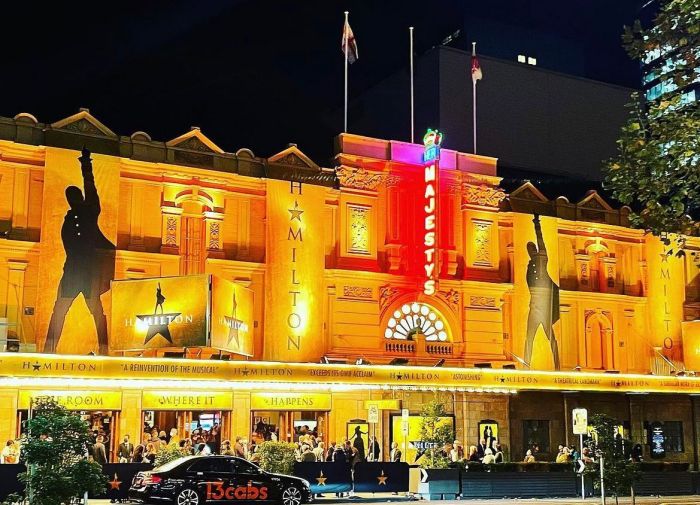
Crossley Street isn’t a thoroughfare. It’s a destination by design. Short and narrow, paved in history and the occasional cigarette butt, the laneway buzzes with quiet energy. Tucked between the East End’s Princess and Her Majesty’s Theatres are just steps away while Chinatown’s carved archways and lacquered dining rooms are just around the corner.
There’s something cinematic about the sound of Melbourne’s vintage W-class trams rattling past the intersection of Bourke and Spring—and yet, you’re no more than a ten-minute walk to Federation Square, Flinders Lane’s design havens, or the sharp-edged modernism of Collins Street’s Paris end. This part of Melbourne moves at its own pace—one that values atmosphere over spectacle.
The Lancemore Group
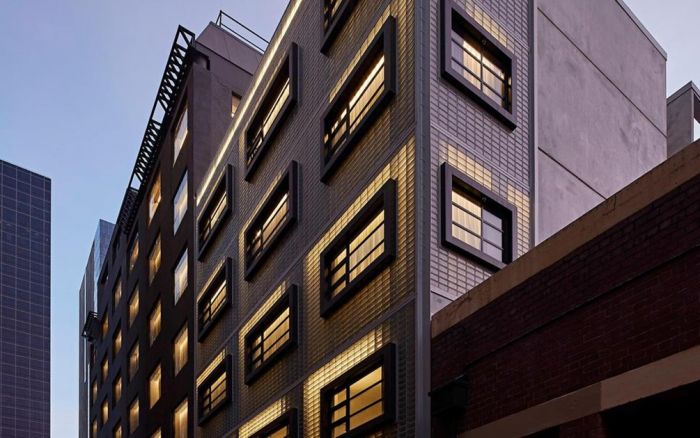
Lancemore Crossley St. is part of the Lancemore Group—a family-owned Australian collection known for its ability to tune into the frequency of place. From vineyard retreats in regional Victoria to art-forward city boltholes, each property in the portfolio offers its own distinct character while sharing a common thread: considered design, local engagement, and a refusal to blend in. Crossley St. is perhaps the most overtly theatrical of the group’s offerings—a fitting choice for a stage set like Melbourne’s East End.
A Hotel That Knows Its Lines

Opened in late 2020, Lancemore Crossley St. is as theatrical as its postcode suggests. The design brief leaned into the neighborhood’s dramatic pedigree and emerged with something richer than mimicry—it’s not themed, it’s performed.
You enter into what might be mistaken for a stage set: a darkened lobby with textured walls, velvet seating, sculptural lighting, and art in every corner. But rather than try to outshine Melbourne’s aesthetic complexity, the hotel leans into it—quirk meets polish, and each decision feels precise.
At the centre of the reception area sits a chandelier—not dangling from above, but grounded, artfully poised on a circular divan. Overhead, ceilings are kept low to create intimacy rather than grandiosity. The lift, meanwhile, offers its own miniature drama. A haunting audiovisual installation by local artist Roynae Mayes reimagines the legend of Frederick Federici, the opera singer who famously died mid-performance at the nearby Princess Theatre in 1888. Inside the lift, Federici prepares for the stage—applying makeup, muttering lines, sometimes singing—and it’s as ghostly as it is oddly comforting. I began to look forward to it, as if being welcomed into a private backstage ritual.
Shared Spaces With a View
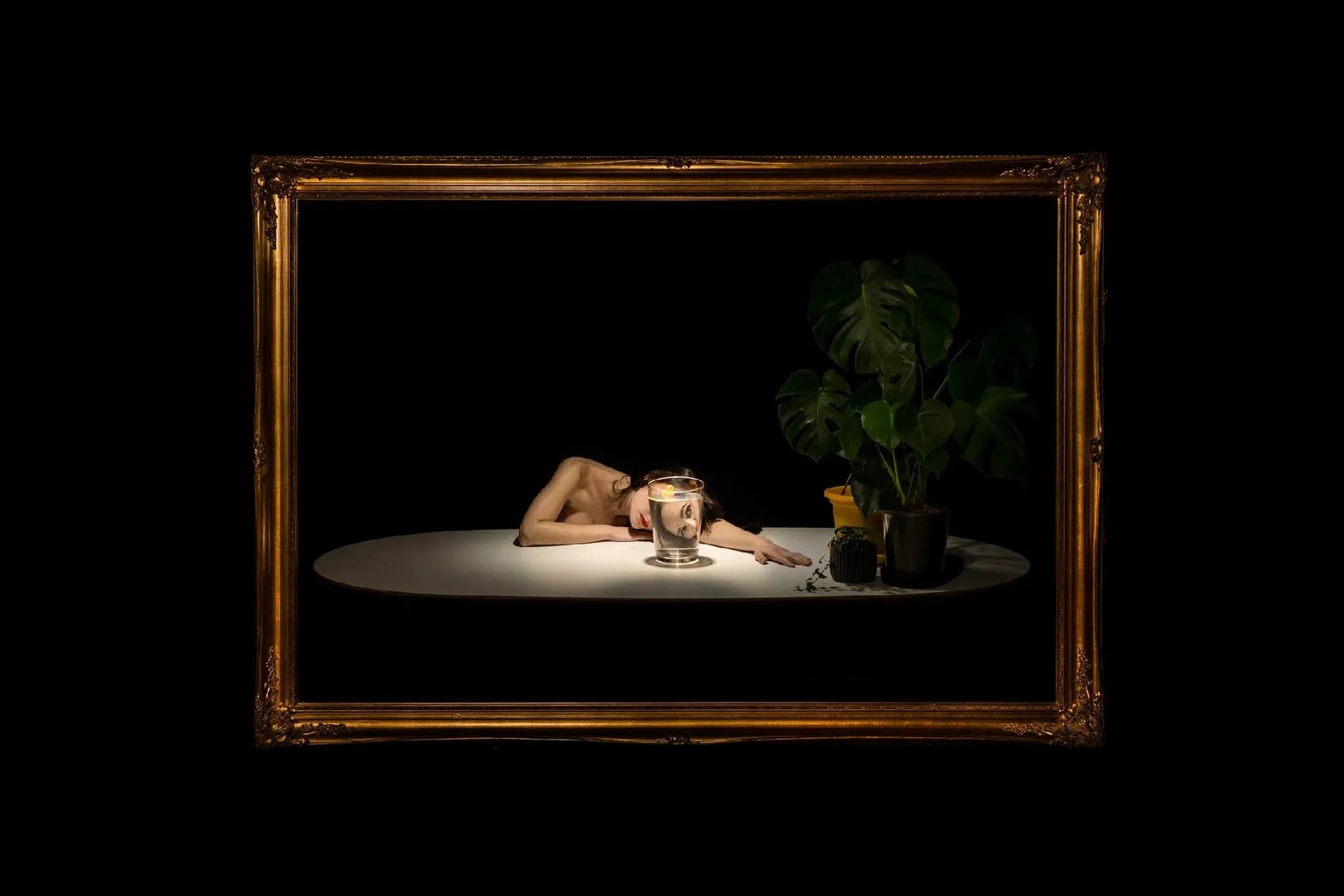
The hotel’s shared spaces are understated but memorable. A combined reception, café, and bar space feels equal parts gallery and lounge, dotted with commissioned artworks and sculptural accents. It’s intimate rather than expansive, and that’s part of its charm—it’s for hotel guests, not Instagram pilgrims.
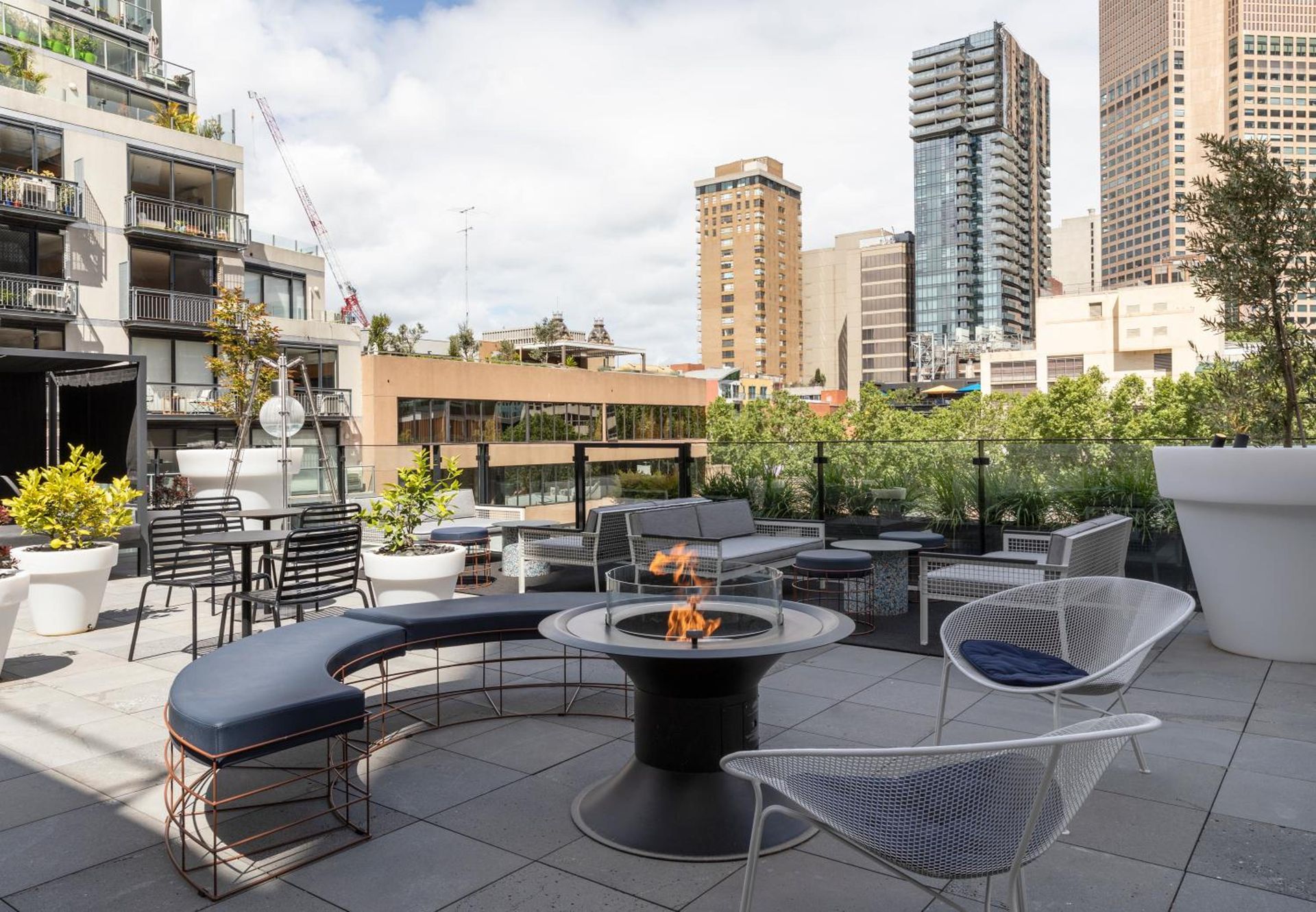
The rooftop terrace is a true highlight: not towering, but elevated just enough to steal a slice of skyline and sun. Lounge chairs are arranged around a clean-lined fire pit, and in summer, this becomes an urban suntrap for aperitifs and idle conversation. Artist Laura Woodward’s kinetic sculpture plays with light and water, throwing shifting patterns across the terrace after dusk. Another mural, by Tristan Kerr, riffs on vintage theatre posters, tying back to the area’s storied stages. The rooftop isn’t showy—it’s smart. Private. The kind of place where someone might be reading Proust in sunglasses, or sipping a Mornington rosé while the city’s hum continues below.
There’s also a petite gym and pilates studio, though the real workout is walking the city’s grid with its sudden hills and laneway detours.
The Rooms: White Space, Black Accents, and a View
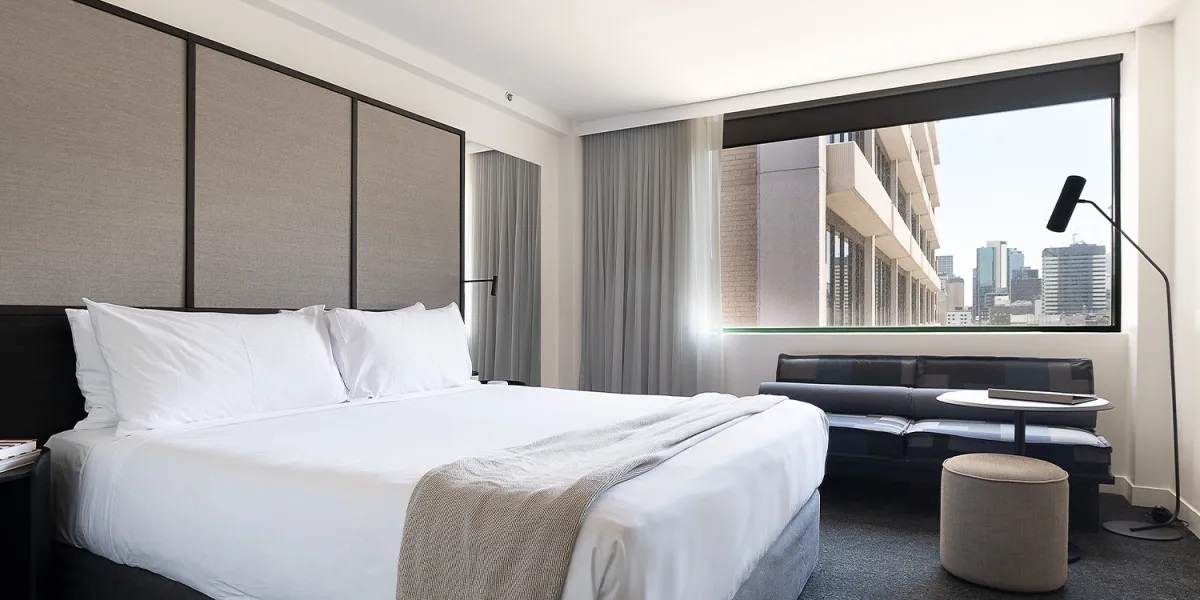
The 113 rooms come in a quiet range of configurations—from cleverly compact to expansive suites. I stayed in a One Bedroom Terrace Suite, and while the design leaned minimal, it never felt spare. White-walled interiors are accented by blackened steel, deep green upholstery, and framed artwork by local talent.
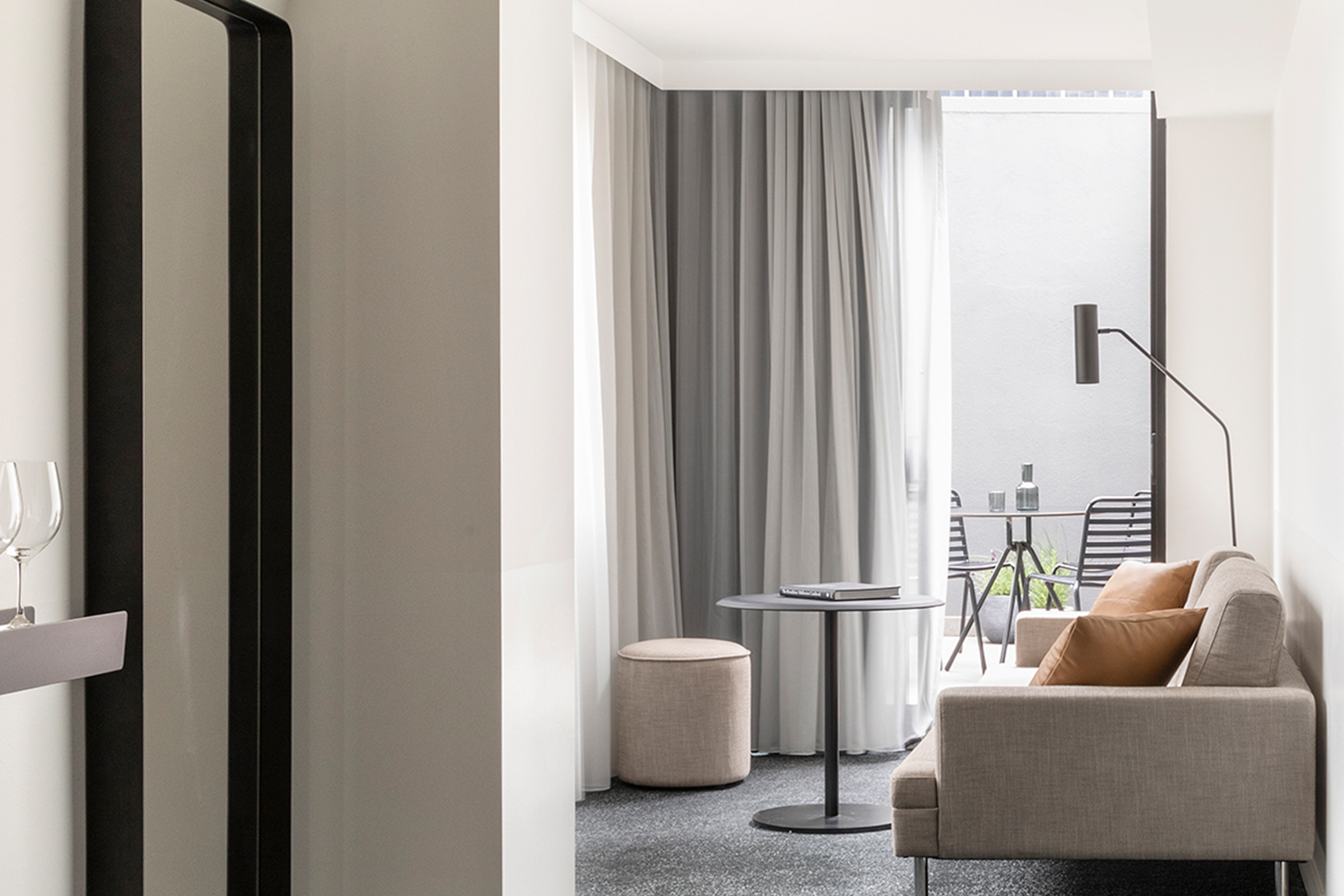
The living area was functional but inviting, with a plush sofa and a television cleverly tucked out of sight. Floor-to-ceiling windows opened onto a generous private terrace, where skyscrapers jostled with Edwardian rooftops in the view beyond. This was my favorite space—a little outdoor salon, ideal for breakfast or a quiet Negroni at dusk.
The bedroom was plush without overstatement. Linens crisp, lighting warm and layered. There’s a silent sophistication in how everything works without needing explanation. USB ports where you need them. Mirrors with proper lighting. A rainfall shower that delivers on its promise.
Drinks Before Curtain Call
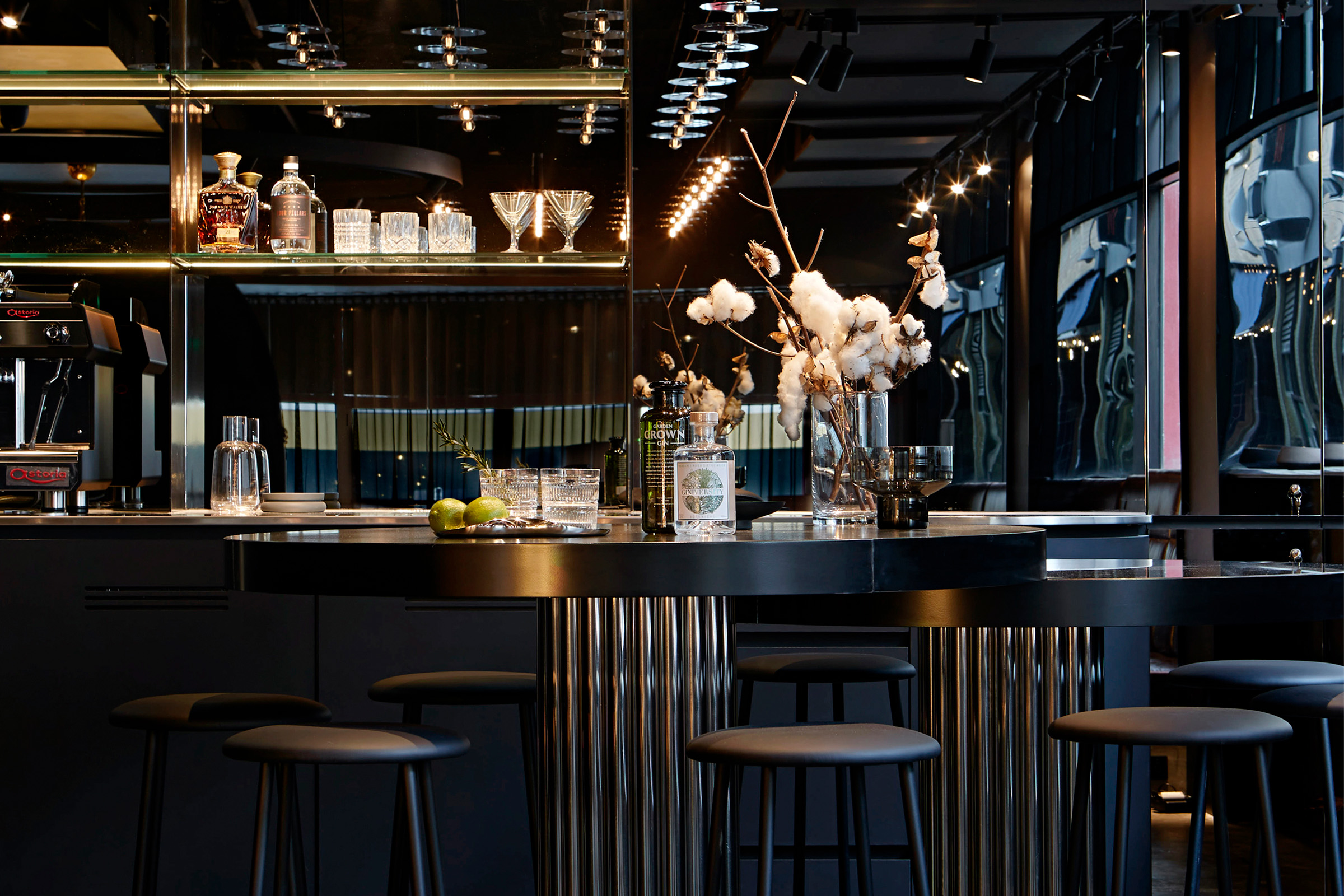
Breakfast at Lancemore is served in the Bodhi café-lounge near reception. It’s a hybrid space that manages to feel like both a members’ club and someone’s well-appointed kitchen. The morning spread includes artisan breads, pastries, and an à la carte menu featuring things like soft scrambled eggs, smoked trout, and avocado with furikake. It’s not revolutionary—but it’s thoughtful and well-sourced.
In the evening, there’s a social hour from 5–6pm: complimentary drinks served in the lobby, a subtle prelude to whatever the night may hold. For those staying in, bottles from Lancemore’s vineyards in the Mornington Peninsula and Macedon Ranges are available—the rosé is particularly good, crisp and minerally with just enough depth.
Still, this is Melbourne. You’d be remiss not to take advantage of the extraordinary culinary landscape just outside. Everything from theatrical degustations to low-lit dumpling joints are within arm’s reach—and many will deliver to your room.
Final Act: A Curtain Call in the City’s Shadowed Heart
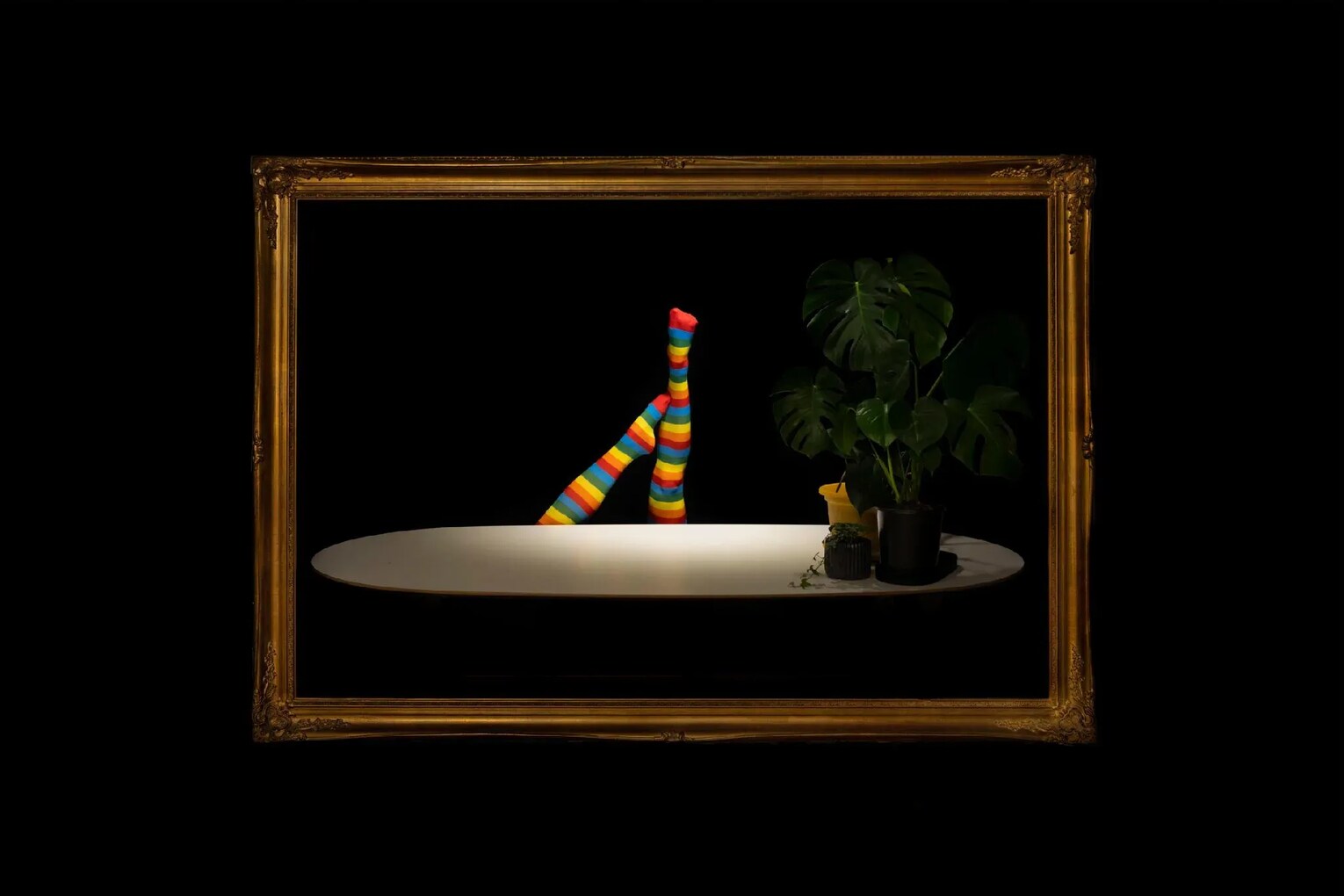
A good hotel reflects the place it inhabits; a great hotel participates in it. Lancemore Crossley St. doesn’t compete with its surroundings—it listens, it observes, and then responds in kind, usually with a line just off-script.
Here, in a city of contradictions—of spires and laneways, trams and towers—this boutique stay offers the perfect vantage point. Not the highest. Not the flashiest. But perhaps the most intimate. Like sitting front row in a darkened theatre, waiting for the overture to begin.
![]()
